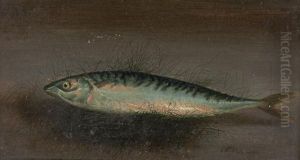S. Colman Paintings
Samuel Colman was an American painter, interior designer, and writer, born in 1832 in Portland, Maine. His artistic journey was significantly influenced by the picturesque landscapes of the United States and Europe, and his work is often remembered for its romantic and detailed portrayal of nature's beauty. Colman's early life was spent moving to New York City, where he would later become a central figure in the art scene of the 19th century. His education in the arts began under the tutelage of Asher B. Durand, a leading figure in the Hudson River School, which profoundly impacted Colman's artistic direction.
Colman's career was marked by both innovation and a deep reverence for the natural world. He traveled extensively throughout Europe and the Near East, drawing inspiration from a variety of landscapes and cultures. These experiences enriched his palette and broadened his thematic range, incorporating elements of Romanticism and later, more reflective and nuanced interpretations of light and color, indicative of the emerging Impressionist movement. Despite his explorations of new styles, Colman remained deeply connected to the ideals of the Hudson River School, emphasizing the importance of natural beauty and the sublime.
Throughout his career, Colman also engaged in interior design and wrote extensively on art. His writings reflect a profound understanding of the theoretical underpinnings of art and design, contributing significantly to the intellectual discourse of his time. As an artist, his work was widely exhibited and collected, earning him recognition and accolades from both American and European institutions. Samuel Colman's legacy is that of a bridge between the traditional landscapes of the Hudson River School and the evolving artistic expressions of the late 19th and early 20th centuries. He died in 1920, leaving behind a body of work that continues to be celebrated for its beauty, depth, and influence on American art.
